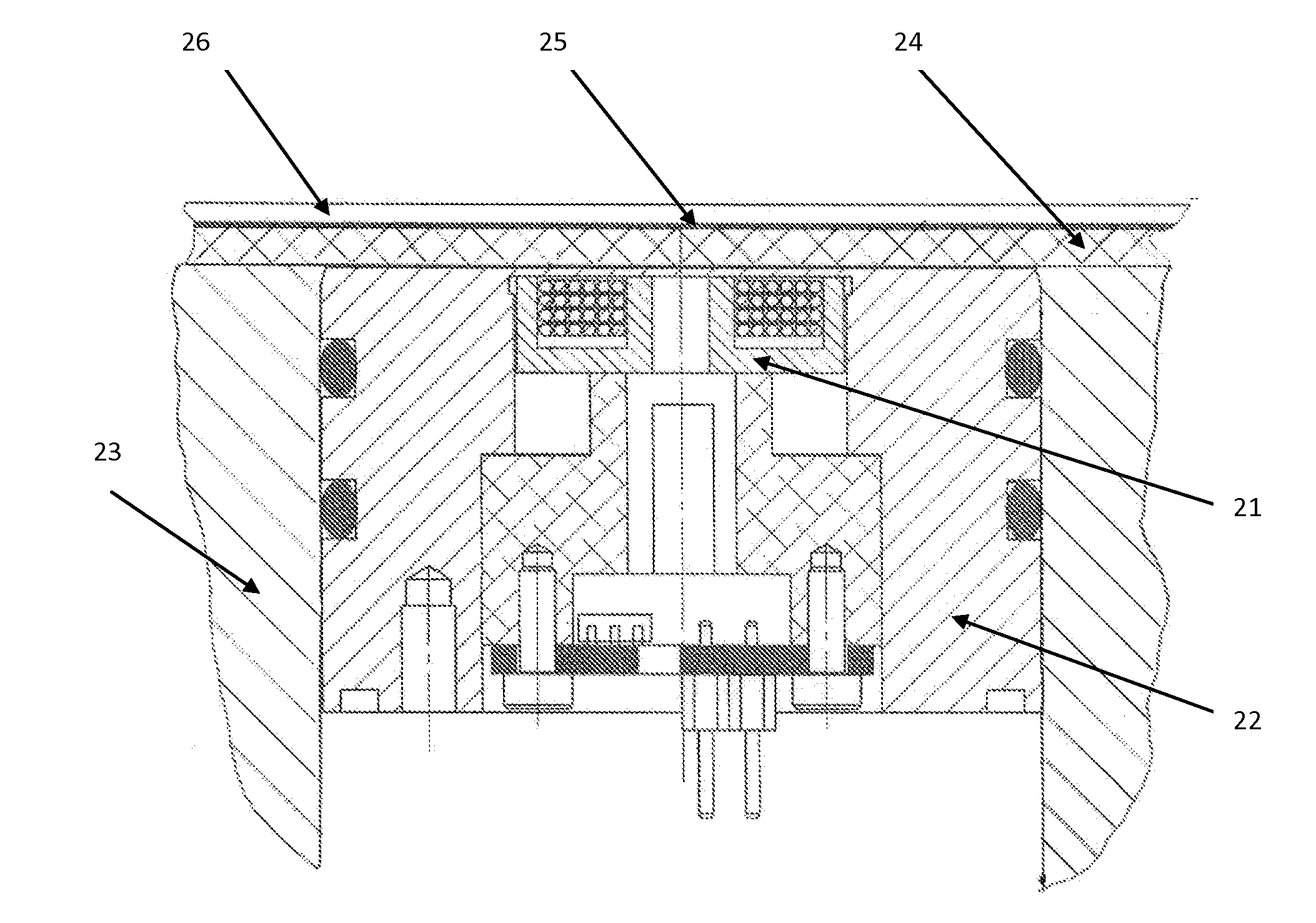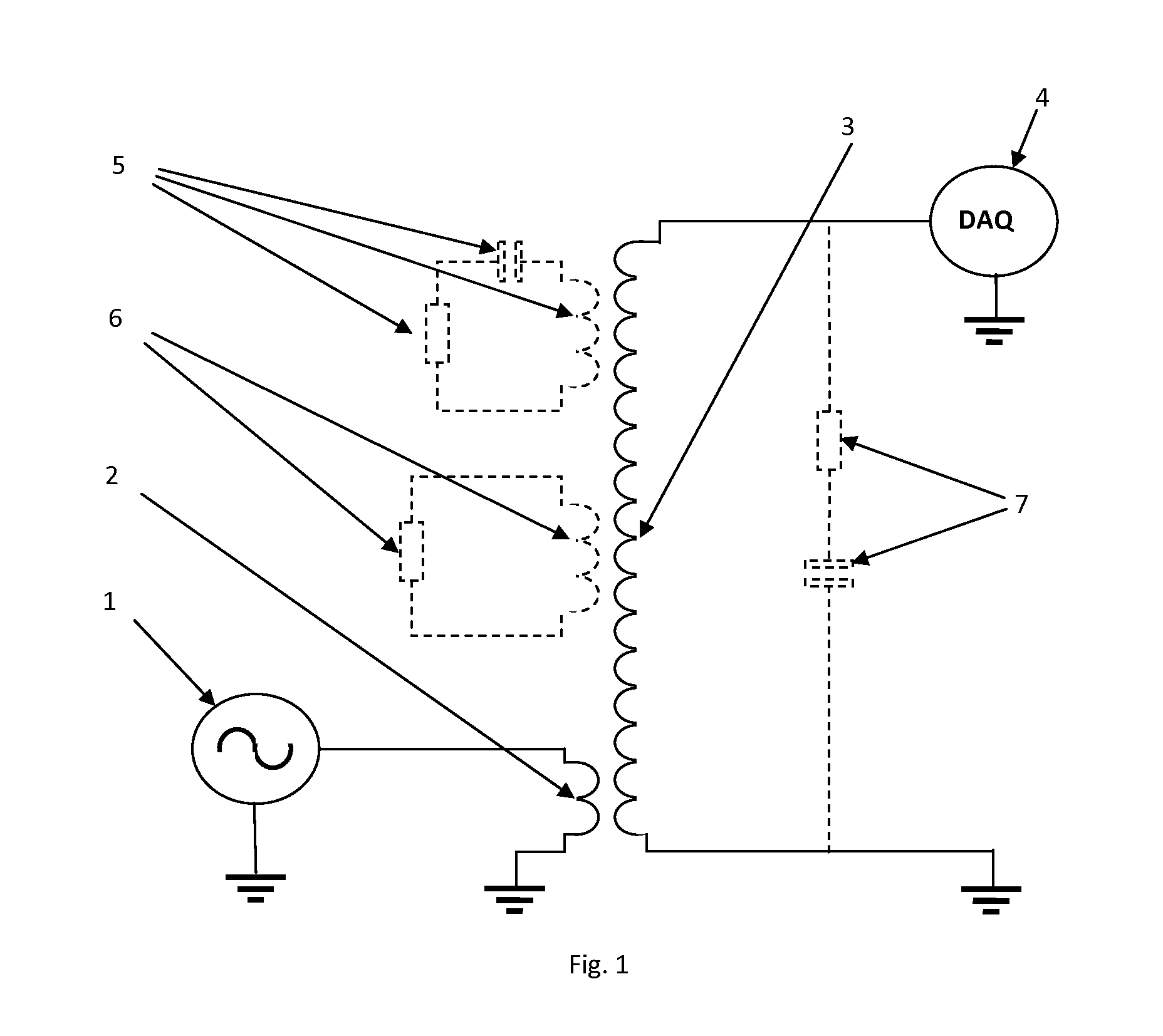Apparatus and method of using impedance resonance sensor for thickness measurement
a technology of impedance resonance and impedance measurement, which is applied in the direction of grinding drives, electrical/magnetic measuring arrangements, chemical vapor deposition coatings, etc., can solve the problems of non-planar surface problems, substrate unusability, and exposed underlying layers, etc., to improve accuracy and improve accuracy
- Summary
- Abstract
- Description
- Claims
- Application Information
AI Technical Summary
Benefits of technology
Problems solved by technology
Method used
Image
Examples
example 1
Typical Changing of Impedance Resonance Sensor's Signal During CMP Process
[0086]FIG. 12 depicts an alternating IR sensor's reading which corresponds to a wafer's presence 91 and a wafer's absence 92 in the sensing area of the sensor. As it can be seen from the graph the sensor periodically finds itself without the wafer in its sensing area. This circumstance can be successfully used in an algorithm to compensate “zero drift” caused by changing of temperature and / or other parameters.
example 2
Typical changing of Impedance Resonance Sensor's Signal During CMP Processing of Copper Film
[0087]FIG. 13 illustrates a changing of IR sensor reading during a copper film CMP process. At the start of the polishing process, electromagnetic coupling of the sensor with the conductive film is strong, significantly stronger than electromagnetic coupling with the substrate. When film thickness is getting thinner, electromagnetic coupling is dropping. The coupling ends when film is polished off, but the electromagnetic coupling with the substrate still remains and practically does not change. This situation, when the difference between a reading of the IR sensor in the presence of a polished wafer and a reading of the IR sensor when the wafer is absent is getting almost constant, indicates that the monitored film is already polished off. So due to very high sensitivity of IR sensor, “end point” of the polishing process can be determined with high accuracy without paying attention to possib...
example 3
Typical Changing of IR Sensor's Signal During CMP Processing of Tungsten Film
[0088]FIG. 14 illustrates a changing of IR sensor reading during CMP process used for Tungsten. As it can be seen from the drawing the profile of the IR sensor signal changing is the same as in, or substantially similar to, case of copper film. The difference is in signal level at the start of the CMP process: ˜31200 Arbitrary Units (AU)—for copper film, and ˜28300 AU—for tungsten film. Also in the case of tungsten planarization, the edge of the polished wafer is more noticeable; however, it does not impact on the end point detection.
PUM
| Property | Measurement | Unit |
|---|---|---|
| impedance | aaaaa | aaaaa |
| impedance | aaaaa | aaaaa |
| thickness | aaaaa | aaaaa |
Abstract
Description
Claims
Application Information
 Login to View More
Login to View More - R&D
- Intellectual Property
- Life Sciences
- Materials
- Tech Scout
- Unparalleled Data Quality
- Higher Quality Content
- 60% Fewer Hallucinations
Browse by: Latest US Patents, China's latest patents, Technical Efficacy Thesaurus, Application Domain, Technology Topic, Popular Technical Reports.
© 2025 PatSnap. All rights reserved.Legal|Privacy policy|Modern Slavery Act Transparency Statement|Sitemap|About US| Contact US: help@patsnap.com



